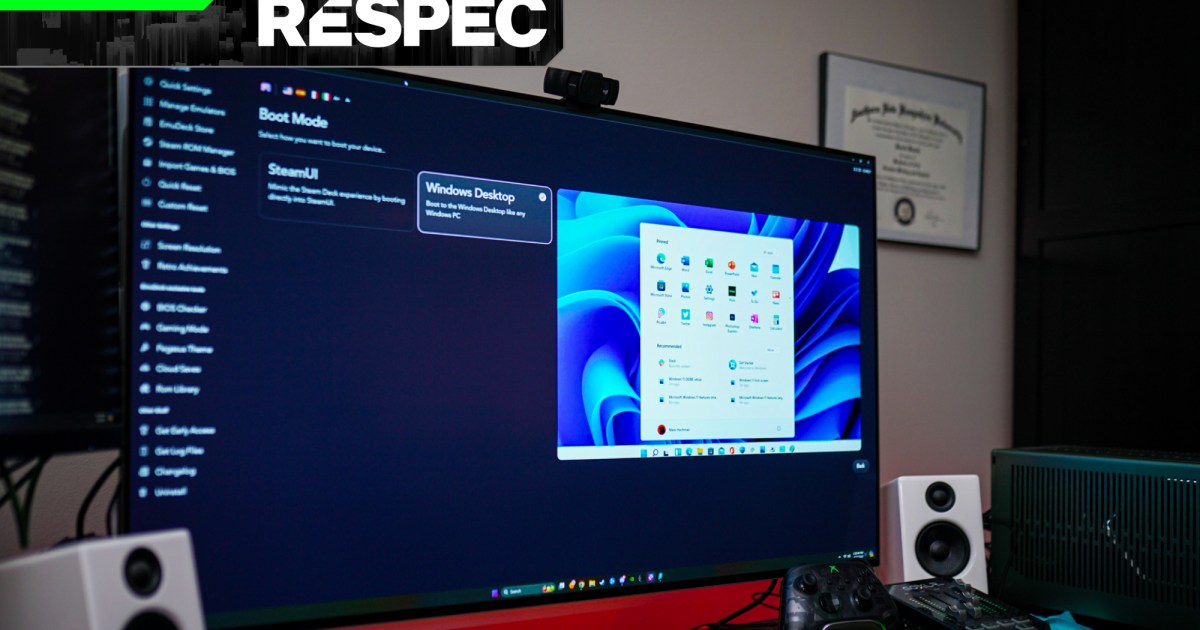The late nineties and early aughts ushered in another Golden Age of Television, changing the way we talk about small-screen storytelling with the likes of serious, dramatic fare like The Sopranos, Six Feet Under and The Wire.
While those more elevated series scooped awards and critical acclaim, at the same time that era gifted us arguably the last great sitcom: Friends. Its ongoing popularity since being added to the best streaming services is only more testament to that.
Why is Friends still such a go-to for many of us?

At the time of its release in 1994, I was a mere 12 years old, not exactly the target demographic, and yet I was hooked from the moment of its UK television premiere on Channel. I rushed home from band practice every Friday to catch the latest episode even though its premise wasn’t designed to lure me in.
A series about six pals making their way in Manhattan, Friends emerged the brainchild of showrunners David Crane and Marta Kauffman and as a risky addition to the NBC slate. With the then-unknown Jennifer Aniston, Courteney Cox, Lisa Kudrow, Matt LeBlanc, Matthew Perry and David Schwimmer cast as the titular sextet, their anonymity gave the series a fresh slate to reflect youthful ’90s attitudes.
“There’s nothing to tell! It’s just some guy I work with,” says Cox’s Monica Geller, a twenty-something chef excited about an upcoming date. The show’s first line of dialogue hints at some of its initial pull; Monica’s date with “Paul the wine guy” results in him spending the night. Granted, it’s hardly a wild, out there storyline. In the context of the 1990s it certainly betrays typically-safe, family-oriented sitcom themes right out of the gate.

That pilot storyline – much like Ross’ divorce – set the show apart at time of release, lending it a bit of edge. Through a 2024 lens? It feels a tad vanilla. But those story choices, once so risque, now form part of its lasting appeal, cementing the tone for what’s now a comfort watch for many. Settling down for a few episodes of Friends – check out our roundup of the best Friends episodes – is like hunkering down in a buttery-soft oversized sweatshirt. It evokes feelings of safety and belonging: a wholly separate vibe than prestige television.
Not only that, it’s easy to dip in and out. For me, returning home from work some evenings I’ll pop on a few episodes to wind down before bed. Doesn’t matter where I start or even if my partner watched some without me. The storytelling is accessible no matter where you dive in. If I see Friends as an in-flight entertainment option but the smattering of episodes is from the middle of season 7 and my rewatch at home is only on season 4, do I pass it over? No way. I might not recall exactly what’s happening but in a matter of moments I pick it up. “Oh, right, this is the one where Monica’s mad about Rachel kissing Ross.”
Clowning around with your best buddies

A lot of the draw is the platonic intimacy. Is there any human that doesn’t crave that level of intimate and unconditional love, regardless of romance or not?
The show’s serialized elements enrich the experience, but you aren’t required to remember painstaking quantities of backstory to enjoy – one of the biggest criticisms leveled at the Marvel Cinematic Universe’s ever-expanding slate.
Once you sink in, it offers sharp and still-relevant observations about relationships and making it as a twenty-something. Much is said about the nostalgia it evokes for the idealism of the 1990s, made emblematic now by the resurgence of formerly-counterculture ’90s apparel being dragged back into the mainstream.
But Friends boasts another form of longing: human connection. The Internet was not as widespread as it is today, and smartphones wouldn’t be invented until years after the series ended. Don’t worry, I’m not about to rag on technology. I love my smartphone (in fact, I’m writing this article on a commuter ferry thanks to my iPhone) and I advocate for easier access to information at my day job. So while it doesn’t affect us all, isolation due to the surge in online culture is very real.
Much like Seinfeld (read our pick of the best Seinfeld episodes) did for a slightly older demographic, Friends captures the distinct feeling of goofing off. You know, just hanging out. The feeling that there is nowhere you would rather be than clowning around with your best buddies. How many shows or movies for that matter take that same “risk” as Friends by decentralizing romantic love and placing platonic love at its heart?

I distinctly recall – sure, I was 12-22 for the series’ run – my life with my friends revolved around figuring out the world together. A friend of mine echoed this, aptly in a conversation over text: “In my opinion, I think a lot of the draw is the platonic intimacy. Is there any human that doesn’t crave that level of intimate and unconditional love, regardless of romance or not?”
It’s a cozy example of community. Who hasn’t missed that over the last few years? I know I have. The gang live close by one another with four of the six living in the same building, while it’s implied that Ross and Phoebe’s apartments are within walking distance (and even closer once Ross moves across the street). They have keys to each other’s places. They hang at Central Perk. They frequently hangout doing activities that are now relegated to “things we do on our own” such as putting together furniture and doing laundry.
It’s like you’re always stuck in second gear

It comes to me as no surprise that in 2024 the show remains as popular as ever. Second screen shows – that allow for a watcher to scroll their phone while watching – are huge. At the height of the pandemic, reruns became must-watch TV for their soothing, comfort factor.
Generation Z in particular latched onto shows like Friends that withstand repeat viewings – my partner’s 21 year-old sister informs me that she’s seen Friends at least ten times all the way through: “Whenever I need a feelgood show, I put on Friends.”
That same friend of mine echoed this after I told her I was writing this piece: “I literally was watching it in the background earlier today. I’ve been making my way through from the beginning lately. Again. For the zillionth time. Lol.”
Who knew that the series’ catchy-as-hell theme song would adopt another meaning all these years later? That it’s the show itself that’s been there for us.
Friends is one of the best Max shows, with 10 seasons streaming on the platform in the US. For those in the UK and Australia, you can catch it on Netflix (Aussies can also find it on Stan).










































































































































You must be logged in to post a comment Login